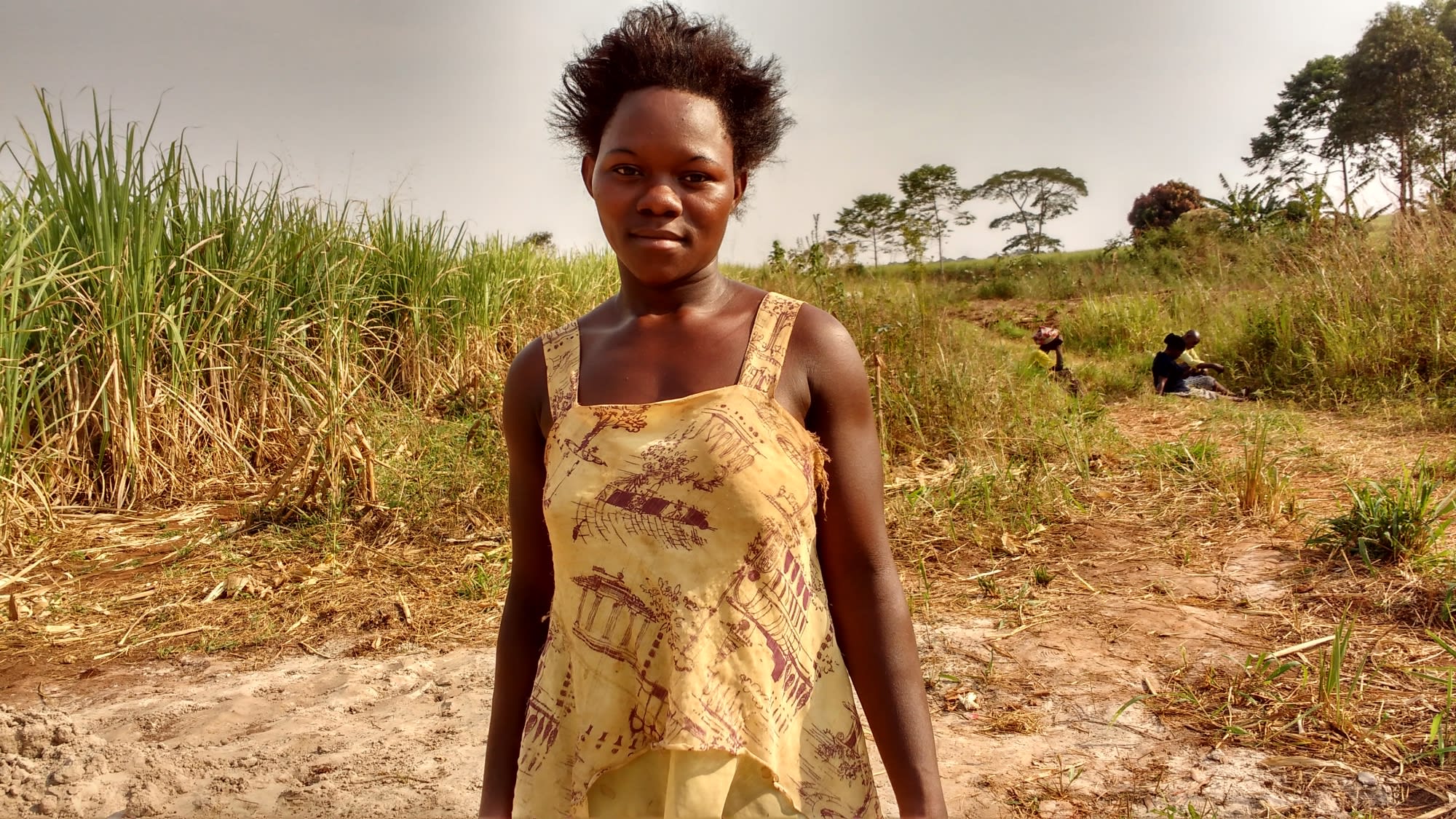Nyakasenyi Byebega is a rural community of 200 people with a landscape that gently slopes into a valley with expansive sugarcane crops growing. The houses are scattered in a settlement pattern around sugarcane plantations. Most are made of brick walls and iron sheet roofs.
The majority of the families in the area grow and sell sugarcane to the local Kinyara Sugar Corporation processing plant or work directly for the factory. People also grow food crops including cassava, maize, sweet potatoes, beans, groundnuts, cowpeas, and millet for consumption. Any surplus food is sold in the local markets.
This community is unique because there are casual labor migrants mainly from the West Nile Region and Luo Sub-region in the north that work as sugarcane cutters.
Typical households wake up at 6am. The men go with some children to the garden with the livestock while women remain at home to prepare food. On school days, the children spend their morning getting ready to go to school. After kids are off, the women join their spouses on the farms. In the dry season, they farm until noon. In the wet season they will stay as late as 2pm. Upon returning home, the women commence chores such as fetching water, cooking, and cleaning, while the husbands rests.
Around 2pm, the family members converge for lunch. The children go back to school after eating and the women often return to the farm. The women return home at 5pm to prepare dinner for the family. Typically, everyone is in bed before 10pm.
The nearest water point for people here is an open source. The water gets turbid during the rainy season, and the source is shifted upstream during the wet season. There is a shallow hand-dug well that's sometimes used, but that takes 2 hours round trip to visit. There is a borehole even further away.
In the shallow well, the water is clear with no smell and with enough water for the community at all seasons. In the deep borehole well, the water is clear with no smell and with enough water, though subjected to overburden due to the many households that use it.
Mary Nyanguma is a 23-year-old woman who lives with her husband, mother-in-law, and two children at the mother-in-law’s home. They mainly grow maize, cassava, beans, and sugarcane for sale and eating at home.

Mary often makes the 2-hour round trip to get water from the hand-dug well. She is the only person in her home who has time to collect water for the family. At times, she uses her husband’s bicycle to collect enough water to meet her family’s clean water need.
"On daily basis, I collect three to four 20-liter jerrycans of water for my family," said Mary. "When I used my husband’s bicycle, it gets punctured due to poor road conditions so I end up carrying the water on my head."
She estimates spending an average of 6000 - 10000 Uganda shillings ($1.6 to $2.7) per month on bicycle repairs. That adds a financial burden on her family.
The open source is unsafe, but since it takes only 20 minutes to fetch water from the point many community members opt to use it. Doing so saves time, but exposes family members to waterborne diseases.
Here’s what we’re going to do about it:
New Hand-Dug Well
With the guidance of our artisans and mechanics, the excavated well will be cased, sealed with a well pad, and then finished with a new Consallen pump. The community will participate in excavating and constructing the water source.
Excavation takes a month or more on average, depending on the nature of the rock beneath. Construction of the well lining and installation of the pump takes on average 12 days.
This well will be located in Nyakasenyi Byebega Community and will bring clean water closer to families having to walk long distances for their water.
Improved Sanitation
The aim is that all households own an improved latrine. While most households have some form of latrine, they often do not have a protective superstructure to provide privacy and protection from the elements. Almost none have a handwashing facility or water nearby.
Some households do not use a latrine but use the bush. Due to open defecation, feces are spread all over the village. This leads to waterborne diseases and contamination of groundwater and surface water.
"The sanitation situation in my village needs improvement. Few of us have latrines and I accept to be involved to help others have sanitation facilities as well," said Sarah Nyanjura.
"It's meaningless if few have latrines and majority do not have because they eventually become source of contamination for all."
Our aim is that the community is able to live a healthy life free of preventable diseases. We endeavor that at the end of our presence in the community, people will have both access to sustainable, clean water and access to sanitation. We have now organized families to form digging groups for latrine construction, and empowered them with tools to use.
Training
Training’s main objectives are the use of latrines and observing proper hygiene practices since these goals are inherently connected to the provision of clean water. Open defecation, water storage in unclean containers and the absence of handwashing are all possible contaminants of a household water supply. Each participating village must achieve Open Defecation Free status (defined by one latrine per household), prior to the pump installation for a shallow hand-dug well.
This social program includes the assignment of one Community Development Officer (CDO) to each village. The CDO encourages each household to build an ideal homestead that includes: a latrine, handwashing facility, a separate structure for animals, rubbish pit and drying rack for dishes.
We also implement the Community Led Total Sanitation (CLTS) approach with each of our village partners. This aims to improve the sanitation and hygiene practices and behaviors of a village. During these sessions, village leaders naturally emerge and push the community to realize that the current practices of individual households – particularly the practice of open defecation– are not only unhealthy but affect the entire village. CLTS facilitates a process in which community members realize the negative consequences of their current water, sanitation and hygiene behaviors and are inspired to take action. Group interactions are frequent motivators for individual households to build latrines, use the latrines and demand that other households do the same.

 Protected Dug Well
Protected Dug Well
 Rehabilitation Project
Rehabilitation Project






























